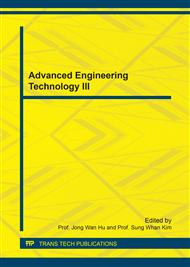p.43
p.49
p.54
p.60
p.64
p.73
p.81
p.88
p.94
Methods and Special Functions Used in Diffusion Modelling
Abstract:
Natural phenomena can be modelled adequately precise with differential equations. An example of such phenomena is diffusion. All differential equations with partial derivatives, of two variables and of the second order, which model the diffusion are parabolic with simple solutions. This simple solution is: erf(x), exponential functions or power series. Adding new differential terms requires the use of more complicated functions, some degenerated, modified or confluent, of real or imaginary variables. This functions are: Bessel, Kummer, Whittaker, Hermite, hyper-geometrical or Heun. The benefit of using these functions lies in greater clarity and precision in mathematical expression. Modelling methods by change-of-variable and function, adding new differential terms and transformations of special functions increase modelling possibilities of convective diffusion in different environments using differential equations. The paper presents a novel approach to diffusion modelling for dry corrosion.
Info:
Periodical:
Pages:
64-72
Citation:
Online since:
June 2017
Authors:
Price:
Сopyright:
© 2017 Trans Tech Publications Ltd. All Rights Reserved
Share:
Citation:


